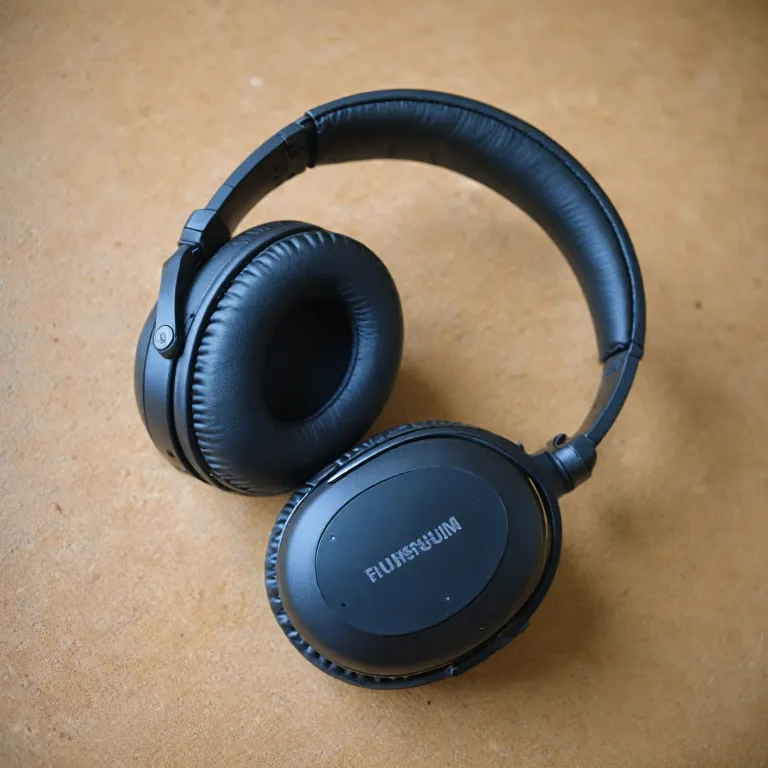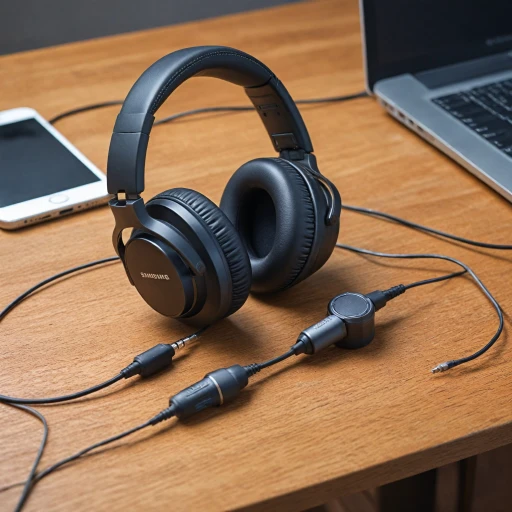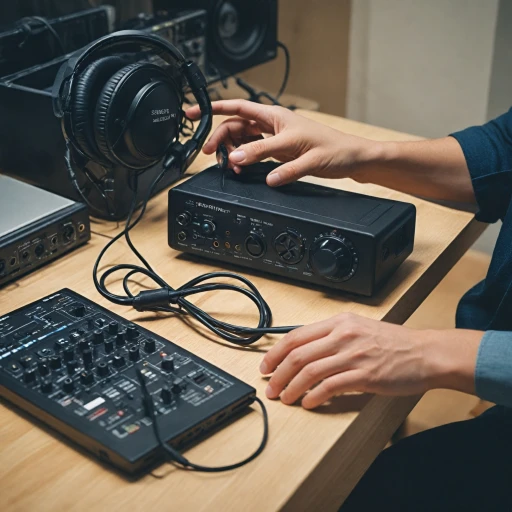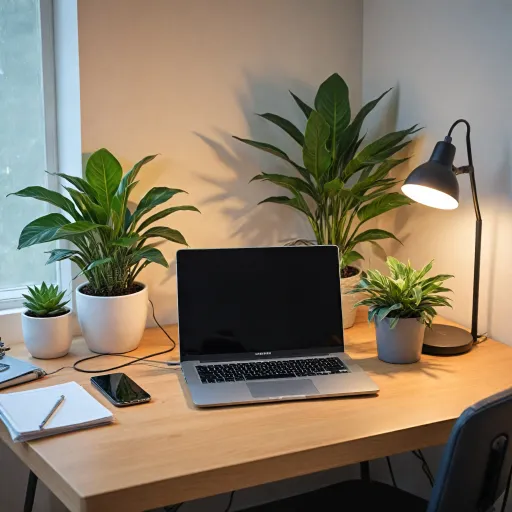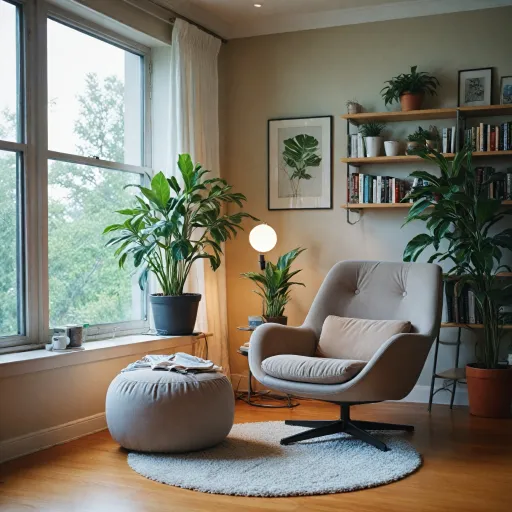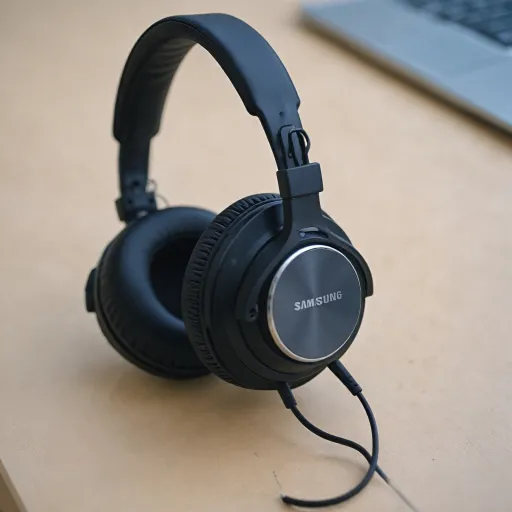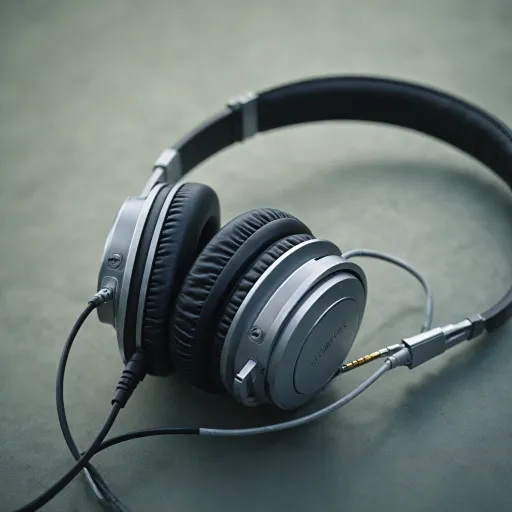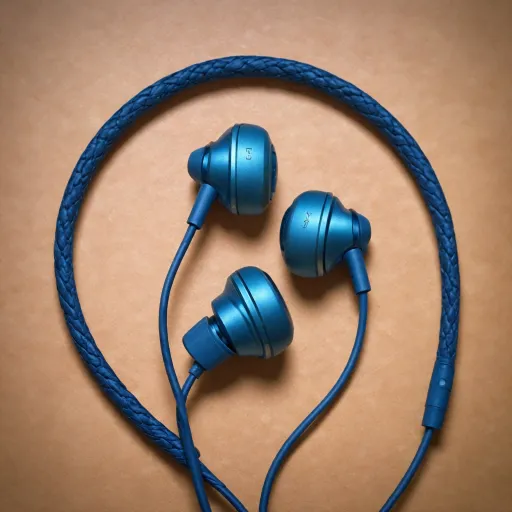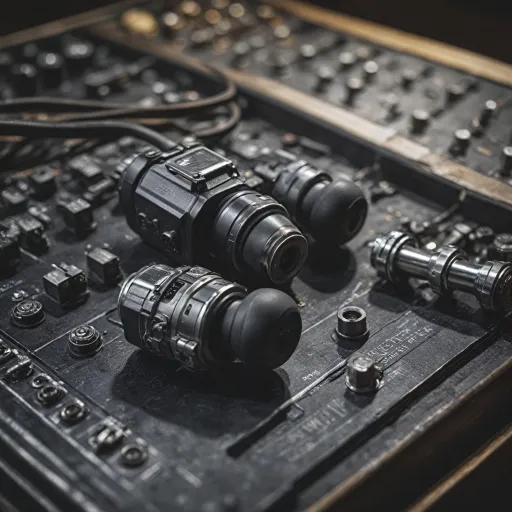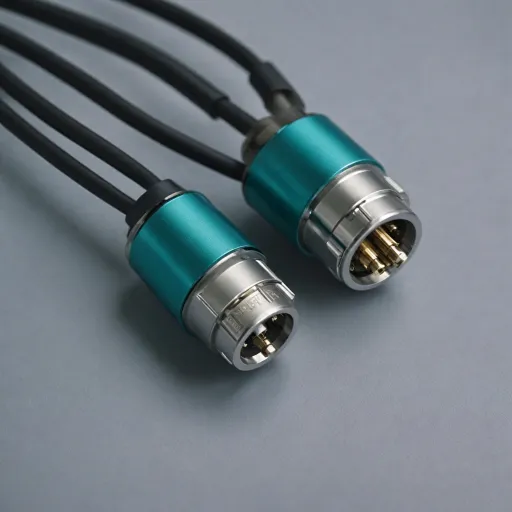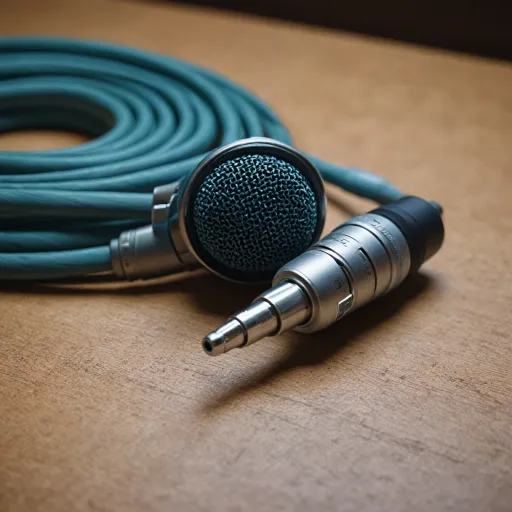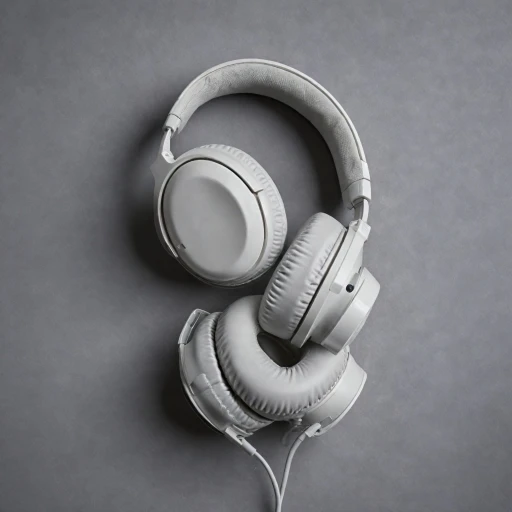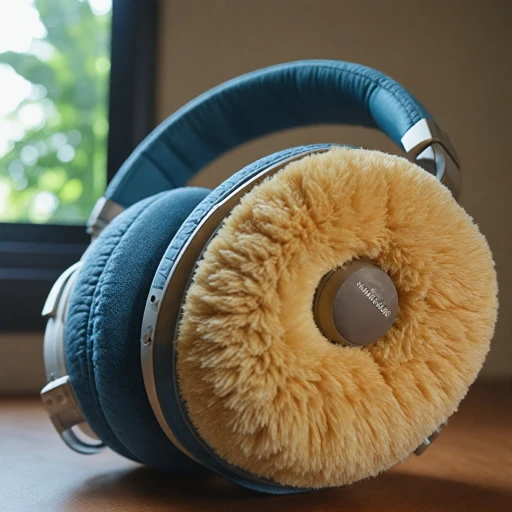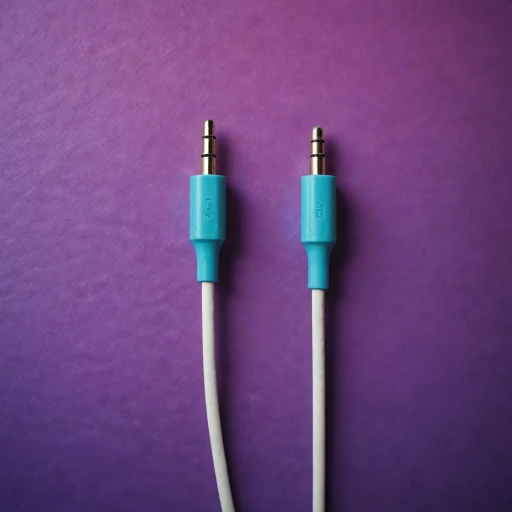
Understanding Noise Canceling Technology
The Science Behind Noise-Canceling Technology
Noise-canceling headphones have become an essential gadget for audiophiles and casual listeners alike. At the heart of this technology lies the principle of Active Noise Cancellation (ANC), a fascinating blend of acoustics and electrical engineering that enhances the auditory experience, especially for urban commuters and frequent flyers. ANC utilizes small microphones integrated into the headphones to capture ambient noises. These sounds are then processed to generate a counter-signal, effectively canceling out the unwanted noise. This technology has been widely implemented in models like the Bose QuietComfort and Sony headphones, celebrated in countless reviews for their impressive sound isolation capabilities. In addition to ANC, noise-canceling headphones often utilize passive noise isolation techniques. The physical barrier formed by the ear cushions, such as those found in SteelSeries Arctis and HyperX Cloud, plays a crucial role in minimizing ambient sound. Memory foam earpads, often used in replacements and upgrades for models such as the Arctis Nova and Kraken Pro, are popular for their ability to conform to the user's ears, offering both comfort and improved noise reduction. While ANC is a critical feature, it's worth noting that different brands and models offer varying levels of performance. For instance, premium models like AirPods Max and Sony MDR headphones might come with a higher price tag, reflecting their advanced technology. Conversely, brands such as Sennheiser and Audio Technica often provide robust ANC features at competitive prices, ensuring anyone can find a fit within their budget range. Looking into noise-canceling headphones? Consider factors like the type of ear cushions and the material they are made from, as they impact comfort and sound quality. If you’re interested in exploring how important these components are in enhancing your listening experience, check out quality headphone replacement pads for more insights.The Role of Headphone Pads in Noise Cancellation
The Significance of Quality Ear Cushions
When discussing noise canceling headphones, one cannot overlook the critical role of headphone pads. These seemingly simple components do more than just ensure comfort; they are instrumental in enhancing the overall experience of noise cancellation. Quality ear pads contribute significantly to the effectiveness of noise canceling technology by forming a proper seal around your ears, which helps to block out surrounding noise effectively. For anyone shopping around, whether it's a fancier set like the Bose QuietComfort or a more budget-friendly option like the Sony Pulse, evaluating the ear cushions can make a world of difference. It's not just about the feel; it's about optimizing the performance of your headphones.Categories of Headphone Pads
Headphones come with a variety of earpads. For instance, genres of covers such as memory foam, cooling gel, and even standard foam provide different levels of comfort and efficiency. Memory foam, for instance, is particularly favored for its lasting comfort and adaptability to individual ear shapes. Brands like SteelSeries Arctis and Audio Technica prioritize memory foam for their pro series, ensuring gaming and audio professionals enjoy sustained comfort. On the other hand, cooling gel ear pads are gaining traction in reviews because they offer a cooler and more comfortable experience, ideal for long listening sessions or gaming marathons. Such options are popular with products like HyperX Cloud and Turtle Beach headsets.Impact on Noise Isolation and Comfort
Properly fitted ear cushions are pivotal for maximizing noise isolation. Brands like Sony and Bose incorporate sophisticated ear pads designed to align perfectly, eliminating gaps that could let ambient noise seep in. When ear pads wear out or lose their elasticity, it compromises the headphones' ability to cancel noise effectively. Replacing worn-out pads can renew a set of headphones, restoring that snug fit that not only enhances sound quality but also maintains the intended level of noise cancelation. Frequent travelers relying on Apple AirPods Max or Sony headphones understand the value of replacing their ear cushions to retain that essential quietness during flights. In conclusion, the choice and condition of headphone pads directly affect the performance and comfort of your noise canceling headphones. Whether you're looking for the next sale price or investing in pro wireless headphones, take the time to consider how the ear pads contribute to sound quality and overall user experience. To dive deeper into the nuances of ear pad comfort and functionality, consider exploring this detailed guide.Benefits of Replaceable Headphone Pads
Advantages of Swappable Ear Cushions
In the world of noise-canceling headphones, the importance of having replaceable headphone pads cannot be overstated. These ear cushions play a crucial role in enhancing your listening experience, especially in brands renowned for superior sound quality like Sony, Bose, and Sennheiser. Having replaceable ear cushions offers several tangible benefits:- Extended Lifespan: Frequent use of your headphones can lead to the inevitable wear and tear of ear cushions, especially when considering popular models like the Bose QuietComfort or SteelSeries Arctis Nova. Spending just a few minutes replacing worn-out pads with memory foam or cooling gel upgrades can significantly extend the life of your headphones.
- Improved Comfort: New ear cushions, particularly those made of high-quality memory foam, adapt to the shape of your ears, offering improved comfort and fit. This is particularly beneficial for gaming headsets like HyperX Cloud or Kraken Pro, where long sessions demand superior comfort.
- Enhanced Noise Cancellation: Fresh headphone pads can seal better against your ears, doubling down on the noise-canceling efficiency. This feature is indicative of brands like the Sony top-tier wireless headphones, which truly shine when their earpads are in optimal condition.
- Maintained Sound Quality: Over time, original ear pads tend to lose their cushiness, impacting sound quality. Replacing them ensures that your audio outputs—whether gaming on a SteelSeries Arctis or enjoying music on an Audio-Technica ATH—remain at a pro level.
- Cost Effectiveness: Rather than purchasing new headphones altogether, investing in replacement ear pads is a more budget-friendly solution, available through a variety of sales and shops online.
Signs It's Time to Replace Your Headphone Pads
Indicators for New Ear Cushions
When you’re deeply invested in the throbbing beats delivered by your headphones, whether it’s a set of high-quality professionals like Sony headphones, Bose QuietComfort, or gaming beasts such as SteelSeries Arctis, the thought of wear and tear can be quite distressing. Yet, just like memory foam mattresses or cooling gel seats, headphone pads have a lifespan. Recognizing when they need replacing is crucial for maintaining optimal sound quality. One tell-tale sign involves the physical condition of the ear pads. If they seem flat or hard instead of plush, it might be that the memory foam or gel material inside has worn down. This leads to a compromised fit and diminished noise canceling capability – reducing your Bose headphones’ or AirPods Max’s effectiveness. Next, check the surface material. If it has cracks, peeling, or excessive wear, it compromises comfort and functionality. For instance, upon constant use, even premium models like Audio Technica or Sennheiser earpads will start showing signs of aging. Furthermore, poor noise isolation is another indicator. Do you find yourself turning the volume higher than usual? That's often a sign that your ear pads are no longer effectively sealing sound, which is critical for headphones excelling in noise canceling, such as the Sony MDR series. Lastly, unpleasant odors are a clear signal it’s time to shop for replacements. Constant exposure to sweat and moisture during long listening or gaming sessions can affect earpad hygiene, leading to stubborn odors that linger despite cleaning efforts. Whether you’re using Apple AirPods, Kraken Pro from gaming titan brands, or any top-tier Sony mdr headphones, replacing tired earpads is essential to maintain that premium audio experience. Keeping an eye on these signs ensures your sound setup remains top-shelf without the critical factors slipping through the cracks.How to Choose the Right Replacement Pads
Selecting the Perfect Earpad Replacement
When it’s time to revamp your favorite noise canceling headphones, choosing the right replacement pads is essential for maintaining both comfort and audio quality. Here’s how you can make an informed choice:- Material Matters: The choice between memory foam, cooling gel, or standard foam can greatly impact comfort and sound isolation. Memory foam options, such as those found in premium brands like Bose QuietComfort or Sony headphones, adapt to the shape of your ears for a snug fit. Cooling gel pads, available across several brands including Steelseries Arctis, offer a refreshing experience, especially in warm conditions.
- Compatibility Check: Ensure the replacement pads are compatible with your specific headphone model. Some replacement earpads are designed specifically for brands such as Sennheiser, Hyperx Cloud, or Sony MDR headphones. Carefully check the model specifics to avoid mismatch.
- Reading Reviews: Insights from other users can be invaluable. Reviews can reveal how a pair of earpads perform over time, especially regarding durability and fit. Look for feedback on pro wireless models like the Arctis Nova Pro and Apple AirPods Max to gauge longer-term satisfaction.
- Price vs. Performance: Balancing cost with quality is crucial. While upgraded or gen-specific ear cushions might come at a higher price point, sales can offer more affordable avenues for high-quality options in leading brands like Audio Technica and Technica ATH.
- Consider Your Usage: If you’re into gaming, specialized options like Turtle Beach and Kraken Pro—designed for extended wear—are worth exploring. For wireless solutions, replacement pads for the Sony Pulse or Bose QuietComfort can enhance long listening sessions.
DIY Guide to Replacing Headphone Pads
Steps to Swap Out Earpads
Swapping out your headphone pads can be a simple task if you know the process. Here's a straightforward guide to help you replace them:
- Remove the Old Pads: Gently twist or pull off the existing pads from your headphones. For models like the Bose QuietComfort or Sony headphones, this might involve a slight twist or detachment from a retaining clip.
- Choose New Earpads: Whether you're upgrading to memory foam for added comfort or cooling gel for a cooler listening experience, select replacement earpads that are compatible with your headphones. Consider reputable shops for options that fit your brand and model, like Arctis, Sennheiser, or HyperX Cloud.
- Attach the New Pads: Place the new ear cushions in alignment with the earcup. Ensure the pads' contours match those of the headphones, then secure them in place. Headphones such as Sony MDR or Bose often have a groove or clip system to facilitate this process.
- Review the Fit: After attachment, make sure the earpads are firmly seated and aligned correctly to maintain optimal noise canceling performance.
Special Considerations for Wireless Headphones
Wireless models like the AirPods Max or Sony Pulse may have additional considerations or unique attachments. Refer to your headphone manual or online reviews for specific tips related to these pro wireless headphones.
Keeping the Price in Mind
When choosing replacement ear pads, comparing prices can be as important as ensuring compatibility. Ideally, sale offers from trusted brands or upgraded gen models will provide value without compromising on quality. Popular options include the SteelSeries Arctis or Audio Technica ATH, which offer diverse choices that cater to both budget and premium preferences.
